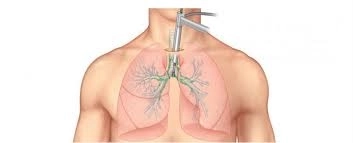
Surgical Treatment of Pneumothorax With Dr. Bassem Ramadan
Published on: 2025-06-30 | Written by: . Dr. Basem Adel Ramadan Cardiothoracic
Professor Dr. Bassem Adel Ramadan, Professor of Cardiothoracic Surgery at the Faculty of Medicine – Alexandria University, explains the causes, types, and surgical options for pneumothorax. He also highlights when surgical intervention becomes necessary to save the patient’s life, along with the latest minimally invasive techniques used in modern thoracic surgery.
What Is Pneumothorax?
Pneumothorax is the abnormal accumulation of air between the lung and chest wall, causing partial or complete lung collapse. This prevents the lung from fully expanding during breathing.
According to Professor Dr. Bassem Adel Ramadan, this condition can range from mild to life-threatening, depending on its cause and severity.
Common Causes of Pneumothorax:
-
Primary Spontaneous Pneumothorax:
Often occurs in young, thin individuals without underlying lung disease. -
Secondary Pneumothorax:
Caused by chronic lung diseases such as:-
Chronic Obstructive Pulmonary Disease (COPD)
-
Pulmonary fibrosis
-
Severe asthma
-
Serious lung infections
-
-
Traumatic Pneumothorax:
Results from injuries like stab wounds, blunt trauma, or certain medical procedures (e.g., central line insertion).
Common Symptoms:
According to Professor Dr. Bassem Adel Ramadan, symptoms vary depending on the extent of lung collapse and may include:
-
Sharp chest pain
-
Shortness of breath
-
Rapid heartbeat
-
Abnormal breath sounds
-
In severe cases: bluish skin or loss of consciousness
When Is Surgery Required?
Professor Dr. Bassem Adel Ramadan explains that surgery becomes necessary in the following cases:
-
Recurrent pneumothorax
-
Persistent air leakage for more than 5 days
-
Bilateral pneumothorax (both lungs)
-
Failure of conservative treatments (like chest tube insertion)
-
Presence of bullae or visible air leaks on imaging
Surgical Treatment Options:
The surgical approach depends on the patient’s condition. Professor Dr. Bassem Adel Ramadan outlines the main options:
1. Video-Assisted Thoracoscopic Surgery (VATS):
-
Minimally invasive
-
Removes air leak sources (e.g., bullae)
-
Involves stapling lung tissue and pleurodesis to prevent recurrence
2. Open Thoracotomy:
-
Used in complicated or recurrent cases
-
Offers a broader view and allows for precise repair
Benefits of Surgery with Professor Dr. Bassem Adel Ramadan:
-
Use of modern techniques for pain reduction post-op
-
High success rates in preventing recurrence
-
Shorter hospital stay
-
Faster return to normal breathing and daily life
Conclusion
Pneumothorax is a condition that demands swift diagnosis and precise treatment decisions, especially in recurrent or severe cases. Professor Dr. Bassem Adel Ramadan emphasizes that surgery is often the definitive and most effective solution. With the use of modern thoracoscopic techniques, patients can expect minimal discomfort and quicker recovery. Close follow-up with a specialized thoracic surgeon ensures optimal outcomes and reduced complications.

